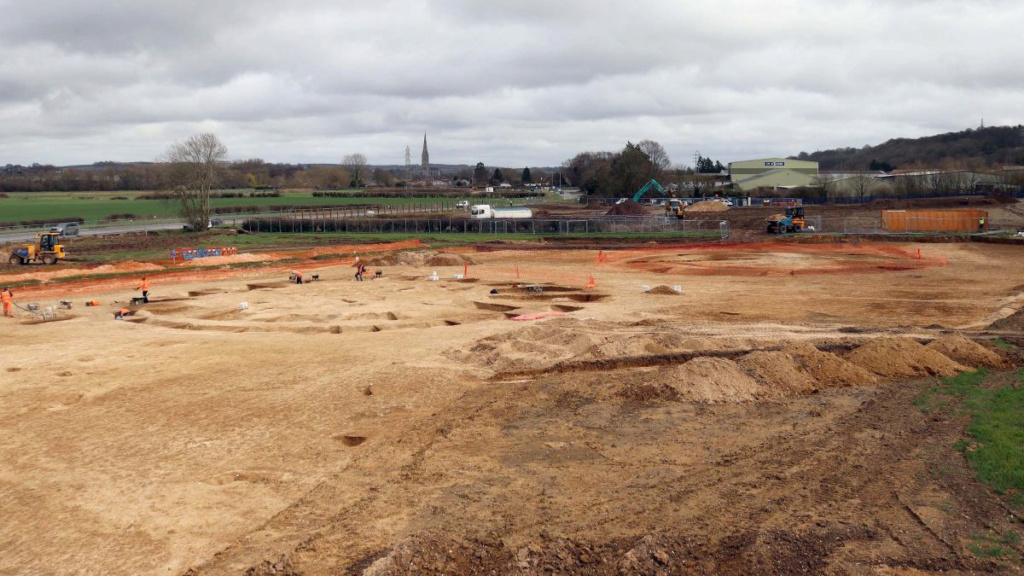Vast Bronze Age cemetery discovered near Stonehenge

Archaeologists from Cotswold Archeology have discovered an extensive Bronze Age burial ground near Stonehenge in south west England. Credit: Cotswold Archeology
Archaeologists have discovered a vast Bronze Age 'tumulus cemetery' believed to be 4,400 years old near Stonehenge.
The cemetery, probably built in the same period as Stonehenge, was discovered near a housing project, less than 16 kilometers from the most famous and mysterious megalithic site in the world.
The cemetery comprises about twenty circular mounds, known as tumuli. These burial mounds (plural) are believed to have been built between 2400 and 1500 BCE, on a chalk hill near Harnham in south-west England.

Apart from the proximity of the site to Stonehenge, there is no evidence that the cemetery was linked to the famous monument. But the burial mounds were thought to have been built around the same time as some of the steps at Stonehenge, according to a statement from Cotswold Archaeology , a private company leading the excavations.
Many archaeologists would now believe that Stonehenge would have been a burial site. But there is nothing to indicate that it was not also a community gathering place to see a gigantic calendar.
?Bronze Age burial mounds with no apparent connection to Stonehenge

The ancient cemetery was surveyed by archaeologists before a building was developed on the site on the outskirts of Salisbury town.
The newly discovered tumuli are of different sizes. The smallest is about 10 meters in diameter and the largest spanning 50 meters. But most of the tumuli are between 20 and 30 meters in diameter. The tumuli would be grouped in pairs or small groups of six.
Since arriving at the site in 2022, archaeologists have been able to excavate the entire cemetery spread over two separate areas of the hill.
Older burials also under study

A ditch around the oldest burial mound running through a cache of red deer antlers, which were used to make tools and small objects in the British Neolithic period, believed to be between 6,500 and 4,400 years ago. Credit: Cotswold Archeology
Archaeologists excavated the remains of nine other burials among the tumuli. In some cases, funerary objects have been found, such as pottery vessels with a very specific shape. These artifacts indicate that the people buried there belonged to the Bronze Age "Bell Beaker culture", which was prevalent in Britain at this time.

The archeology team also found evidence of later occupations at the site, which may be evidence of an Iron Age cultivation area. It consists of more than 240 pits and holes that look like silos. Some of the pits may have been used to store grain. But most would have been used for litter instead. A boon for archaeologists studying how people lived and farmed the land at that time.
The team also found evidence of a Saxon building at the site, along with other Anglo-Saxon artifacts dating back around 1,400 years.
Source: Arkeonews / Cambridge / Cotswold Archeology

